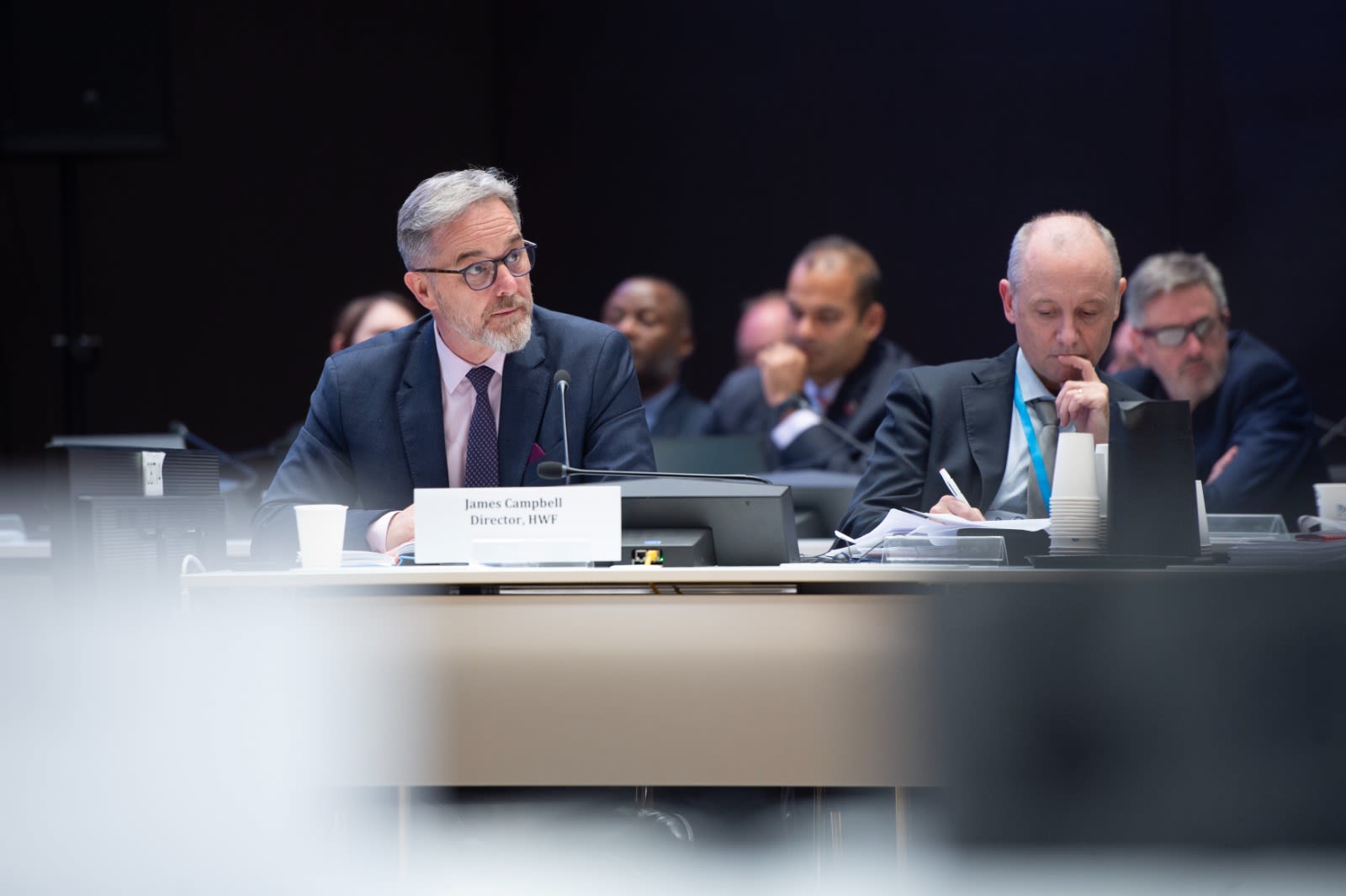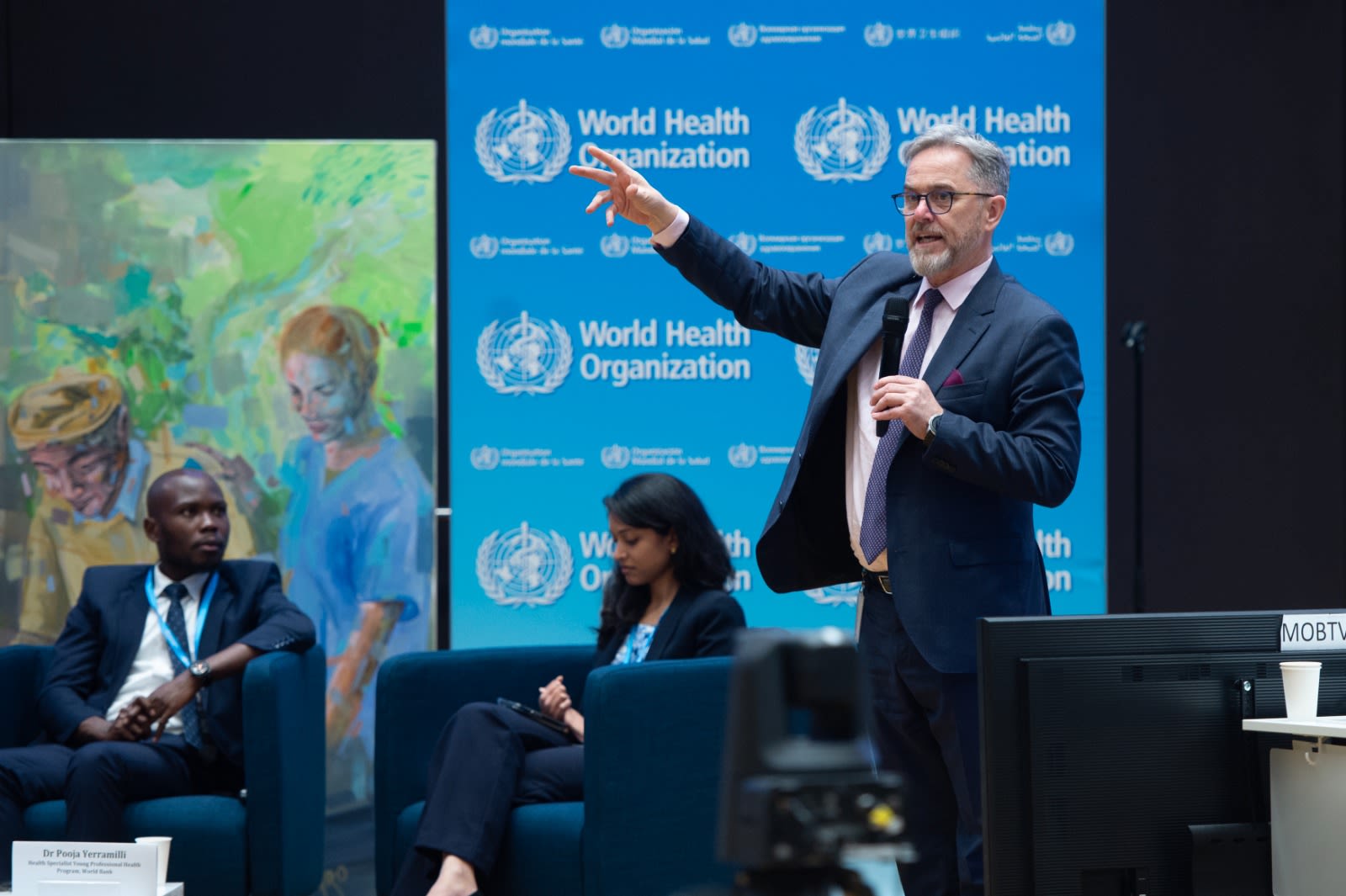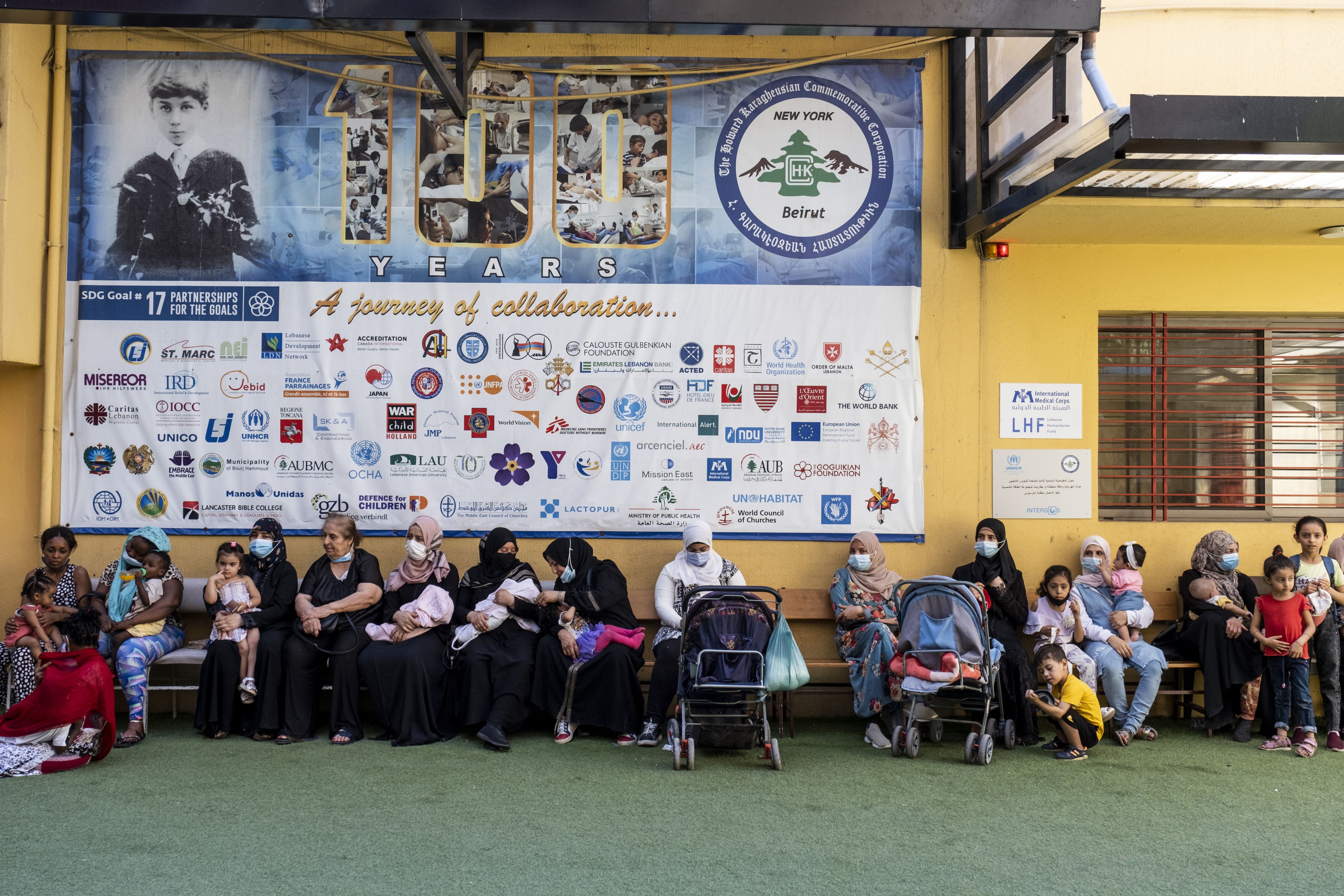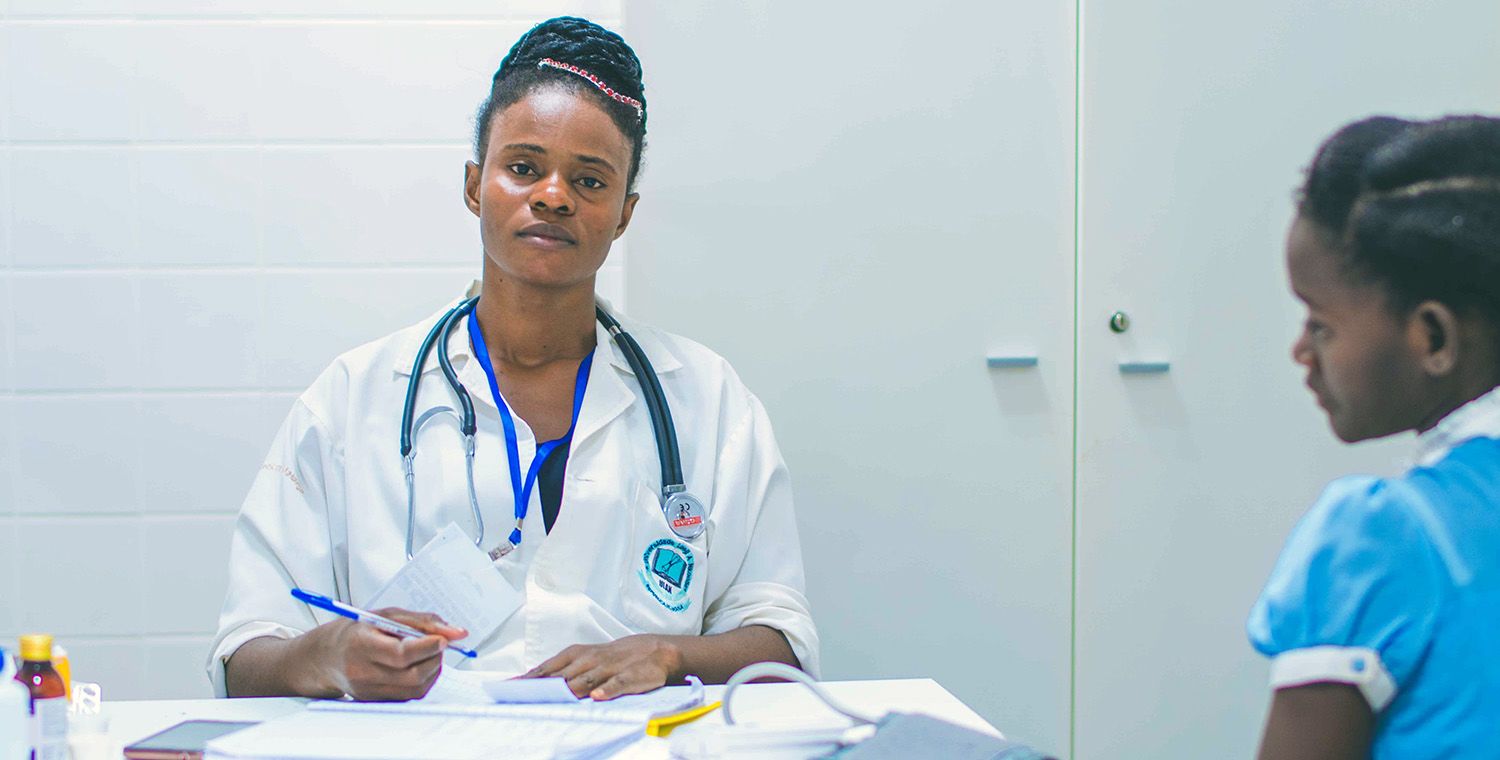Leeds at the WHO: Jim Campbell
Leeds graduate Jim Campbell is Director of the Health Workforce Department at the World Health Organization (WHO).

Jim Campbell, Director of the World Health Organization’s Health Workforce Department. Credit: Violaine Gouel/WHO
Jim Campbell, Director of the World Health Organization’s Health Workforce Department. Credit: Violaine Gouel/WHO
Jim Campbell graduated with a Masters in Public Health in 2008 and is Director of the World Health Organization’s Health Workforce Department. He offers his unique global perspective on the worldwide shortage of health and social care workers.
How does your Health Workforce Department support global health in these tumultuous times?
Health systems are complex, dynamic, political processes and we’re continuously trying to improve them to make them efficient and effective and allocate resources as necessary. That's a constantly evolving process.
The WHO engages non-state actors, civil society, unions, professional associations and education institutions. We have the opportunity to convene all sectors and expertise to come through with evidence-based solutions and practice.
We produce the evidence and the normative work to help countries improve their programmes on workforce development and management.
You’re not going to get equity and equality in one or two years.
One of our core roles is consolidating evidence for public health skills and academic skills. We question the evidence and review it to ask, ‘what's the application of that? What can we learn from that in terms of policy recommendations — and in which settings?’
We look at this through a labour and economics lens, specific to clinical services, public health, palliative care and broader care needs in the community. It’s an education market that produces graduates for the health and care market.
You’re organising an enormous forum to address the global need for health and care workers. What does that involve?
The Fifth Global Forum on Human Resources for Health is the largest international gathering of people engaged in this technical area. We are inviting ministers and stakeholders from education, employment, labour, health and care.

Jim Campbell speaks during a roundtable on "Protecting and investing in the youth and early career workforce," at the Fifth Global Forum on Human Resources for Health. Credit: Violaine Gouel/WHO
Jim Campbell speaks during a roundtable on "Protecting and investing in the youth and early career workforce," at the Fifth Global Forum on Human Resources for Health. Credit: Violaine Gouel/WHO
The WHO is 75 years old and we're at the halfway point of the Sustainable Development Goals that were agreed by the United Nations seven and a half years ago.
The Sustainable Development Goals are universal principles that we believe are critically important and include equity and universal access to health, irrespective of age, sex or race. We must make progress on that at every opportunity.
We're inviting international financial institutions, civil society and professional associations to have a dialogue about where we are today, as we reach the halfway point of the Sustainable Development Goals and after three years of living through the pandemic.
It can take three to seven years to produce health personnel. We can't just switch it on and bring new graduates in.
We’ll be asking, what are we going to learn from 75 years of the WHO’s history to inform action in the next seven and a half years? What are the contemporary challenges and solutions that countries are having to deal with to ensure that they have the right workforce to provide care and to respond to the pandemics? How can we respond to long-term non-communicable diseases, long-term care needs, aging populations and maternal health?
Is there an implicit expectation of WHO member states to work towards its goals?
Absolutely. There are universal principles that many parts of government, civil society and partners all believe in and we need to protect them.
They’re agreed in the World Health Assembly and the constitution of the WHO. The principles are part of the consensus in the United Nations General Assembly. They’re in the International Labour Organization, UNICEF and UNESCO for Education.
We need to ensure that there’s social spending on education, and that health and social protection mechanisms are protected.
We need to put enough resources into them continuously, especially during economic downturn and economic challenges.

Medical schools like at the University of Leeds train health professionals of the future.
Medical schools like at the University of Leeds train health professionals of the future.
How do you see healthcare education changing?
We did a systematic review recently, looking at the disruption to health professional education during the pandemic and how quick faculty, education institutions and students adapted to the new reality of distance learning and virtual learning. It's encouraging.
Humans evolve with technology and the pandemic has forced us into this evolution in a way that previously wasn’t anticipated, but we seem to have come out of it with potentially some very valuable new tools.
We've been providing evidence and publishing extensively around the use of digital tools for health education. The WHO has a global consortium of universities and academic Collaboration Centres helping us in that endeavour.

The WHO has been compiling evidence on how technology can test competencies and practice of health and social care students.
The WHO has been compiling evidence on how technology can test competencies and practice of health and social care students.
The evidence covers a competency-based education using digital tools, the science of peer-based learning, the application of virtual practice and augmented reality. These things can enable us to improve and actually test competencies and practice in this digital world.
I can see huge potential for technology if we make sure that there's equitable access to the rapid application of digital tools — and not only for monetization. There will be rapid gains, but we mustn’t create a digital divide.
If high-income economies have a shortage of health workers, what chance do middle to low income economies have?
That's what gets us out of bed in the morning. High-income countries can have one health worker for every 50 to 70 inhabitants and they’re still struggling to ensure universal access to healthcare. Other countries have one worker for every 700, or 1000, inhabitants, so how do they use their resources?
We've made progress.
At the start of the Sustainable Development Goals, the data was indicating an 18 million shortage of health workers around the world. That's come down slowly and progressively according to data prior to the Covid-19 pandemic. On the basis of that continuing trend, we do see that it could potentially come down to 10 million by 2030.

Queuing for medical attention at a primary health centre in Beirut © Natalie Naccache/WHO
Queuing for medical attention at a primary health centre in Beirut © Natalie Naccache/WHO
Everyone can make progress on an annual basis but you’re not going to get equity and equality in one or two years.
We keep reminding our constituencies that the greatest shortages of health workers are concentrated in countries with low and middle income economies.
We need international solidarity to enable those countries to access additional resources and international financing so they can expand their education, pay wages and employ more people.
What’s your view on the global migration of health and care workers?
As countries responded to the pandemic, it created huge demand in all economies for additional capacity in the health and care economy.
In education institutions, it can take three to seven years to produce health personnel. We can't just switch it on and bring new graduates in. So, the situation creates economic demand in the international labour market and we've seen huge increases in migration.
We don't want to have a situation where a country that pays the most is able to have the workforce. The UK is one example of a high-income country which is looking to recruit additional personnel due to their domestic shortages.
How do you ensure that's not having a negative impact on the countries that you were recruiting from? With international recruitment, look at the principle of equitable access to care. Will recruitment cause a disruption there which far outweighs the benefit to the destination country?
What message do you have for people who work in public health?
At this moment in time, public health is in the spotlight. What is the opportunity this provides for everybody, in every setting? What do we do better?

Challenge yourself. Always ask, 'what can I do?'
Challenge yourself. Always ask, 'what can I do?'
The actions of every scientist, every academic, every policy person, and every clinician are going to make the difference for our universalism and equity goals and aspirations. So challenge yourself. Always ask, what can I do?
It's very easy to point out the diagnostic. Every one of us with a tertiary education can describe the problem. We can gather evidence to describe the challenge. But, it is taking that information, that evidence, that science, into determining a solution that makes the public policy practitioners that Leeds alumni can be proud of.
So, really ask yourself that question. What can I do and how can I make a difference? Because it's through the scientific process that we create change.
Jim's link to Leeds

What did your studies at the University’s Nuffield Centre for Health mean to you?
I took the professional MPH programme which allowed me to continue my professional work and do the postgraduate studies at the same time. From my class, two of us now are working at the WHO and many others have continued to have fantastic careers in public health or health services all around the world.
Not everyone can afford to take time out to do postgraduate studies and not work. Twenty years ago, this was quite innovative in terms of professional postgraduate programmes. I found it very interesting then, and now it's become quite normal.
I look back at it with a huge appreciation because everything in the academic study was immediately tested in the practice environment.
We looked at how to take education and learning from the academic sciences into a practice environment and to be able to create behavioural change – or system change. And it's a lesson that's lived with me throughout my career.
Forever Leeds
312,000 alumni
197 countries
One global community
Never miss a moment
Update your details
Follow @LeedsAlumni
